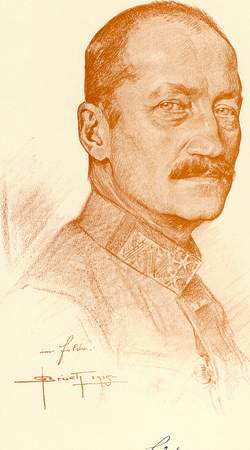Alois Schönburg-Hartenstein on:
[Wikipedia]
[Google]
[Amazon]
 Prince Alois Schönburg-Hartenstein, (german: Alois Fürst von Schönburg-Hartenstein) (21 November 1858 – 21 September 1944) was a
Prince Alois Schönburg-Hartenstein, (german: Alois Fürst von Schönburg-Hartenstein) (21 November 1858 – 21 September 1944) was a
 Prince Alois Schönburg-Hartenstein, (german: Alois Fürst von Schönburg-Hartenstein) (21 November 1858 – 21 September 1944) was a
Prince Alois Schönburg-Hartenstein, (german: Alois Fürst von Schönburg-Hartenstein) (21 November 1858 – 21 September 1944) was a military officer
An officer is a person who holds a position of authority as a member of an armed force or uniformed service.
Broadly speaking, "officer" means a commissioned officer, a non-commissioned officer, or a warrant officer. However, absent context ...
in the Austro-Hungarian army
The Austro-Hungarian Army (, literally "Ground Forces of the Austro-Hungarians"; , literally "Imperial and Royal Army") was the ground force of the Austro-Hungarian Dual Monarchy from 1867 to 1918. It was composed of three parts: the joint arm ...
and as a Prince of Schönburg-Hartenstein, a member of the Austrian nobility
The Austrian nobility (german: österreichischer Adel) is a status group that was officially abolished in 1919 after the fall of Austria-Hungary. The nobles are still part of Austrian society today, but they no longer retain any specific privil ...
. He briefly served from March to July 1934 as the minister of defense
A defence minister or minister of defence is a cabinet official position in charge of a ministry of defense, which regulates the armed forces in sovereign states. The role of a defence minister varies considerably from country to country; in som ...
in the First Austrian Republic
The First Austrian Republic (german: Erste Österreichische Republik), officially the Republic of Austria, was created after the signing of the Treaty of Saint-Germain-en-Laye on 10 September 1919—the settlement after the end of World War I w ...
.
From 1899 to 1913 he was president of the Austrian Red Cross
The Austrian Red Cross (German: ''Österreichisches Rotes Kreuz'', ÖRK) is the national Red Cross Organization in Austria and is part of the International Red Cross and Red Crescent Movement. It was established on March 14, 1880, by Doctor Adam L ...
. Following the outbreak of the First World War
World War I (28 July 1914 11 November 1918), often abbreviated as WWI, was one of the deadliest global conflicts in history. Belligerents included much of Europe, the Russian Empire, the United States, and the Ottoman Empire, with fightin ...
, he commanded several units, including the 6th Division and the XX (Edelweiss
EDELWEISS (Expérience pour DEtecter Les WIMPs En Site Souterrain) is a dark matter search experiment located at the Modane Underground Laboratory in France. The experiment uses cryogenic detectors, measuring both the phonon and ionization signals ...
) Corps.
According to Baron Ferdinand Marterer, Schönburg-Hartenstein was suggested as a candidate for imperial minister of defense by chief of the general staff Arz von Straussenberg in April 1917. In early 1918, as domestic unrest over the war and continuing shortages of food increased within Austria-Hungary, he was appointed to command troops to maintain security within the empire by Emperor Karl I
Charles I or Karl I (german: Karl Franz Josef Ludwig Hubert Georg Otto Maria, hu, Károly Ferenc József Lajos Hubert György Ottó Mária; 17 August 18871 April 1922) was Emperor of Austria, King of Hungary (as Charles IV, ), King of Croatia, ...
. In this capacity, he arrested strike leaders and 44,000 military deserters
Desertion is the abandonment of a military duty or post without permission (a pass, liberty or leave) and is done with the intention of not returning. This contrasts with unauthorized absence (UA) or absence without leave (AWOL ), which ar ...
. In the summer of 1918, he again took combat command, leading the 6th Army in Northern Italy
Northern Italy ( it, Italia settentrionale, it, Nord Italia, label=none, it, Alta Italia, label=none or just it, Nord, label=none) is a geographical and cultural region in the northern part of Italy. It consists of eight administrative regions ...
during the Battle of the Piave River
The Second Battle of the Piave River, fought between 15 and 23 June 1918, was a decisive victory for the Kingdom of Italy, Italian Army against the Austria-Hungary, Austro-Hungarian Empire during World War I. Though the battle proved to be a de ...
, in which he was wounded in the leg. As the Austro-Hungarian political and military situation became ever more precarious in autumn 1918, Prince Alois expressed a realization of the coming end of the war and the monarchy, writing his family that " yremaining duty is to preserve discipline and protect the new Austria."
Following the fall of the Habsburg monarchy and the establishment of republican Austria, he was the state secretary of the army from September 1933 to March 1934, when he was appointed to the post of defense minister in the cabinet of Engelbert Dollfuss
Engelbert Dollfuß (alternatively: ''Dolfuss'', ; 4 October 1892 – 25 July 1934) was an Austrian clerical fascist politician who served as Chancellor of Austria between 1932 and 1934. Having served as Minister for Forests and Agriculture, he a ...
, a position he held until July 1934. While in government, he appealed to Austrian nationalists and veterans to support the Dollfuss administration and oppose pro-German National Socialism
Nazism ( ; german: Nazismus), the common name in English for National Socialism (german: Nationalsozialismus, ), is the far-right politics, far-right Totalitarianism, totalitarian political ideology and practices associated with Adolf Hit ...
.
References
{{DEFAULTSORT:Schonburg-Hartenstein, Alois 1858 births 1944 deaths Austro-Hungarian military personnel of World War I Austrian military personnel Austrian Ministers of Defence Austrian princes Knights of the Golden Fleece of Austria Commanders Cross of the Military Order of Maria Theresa